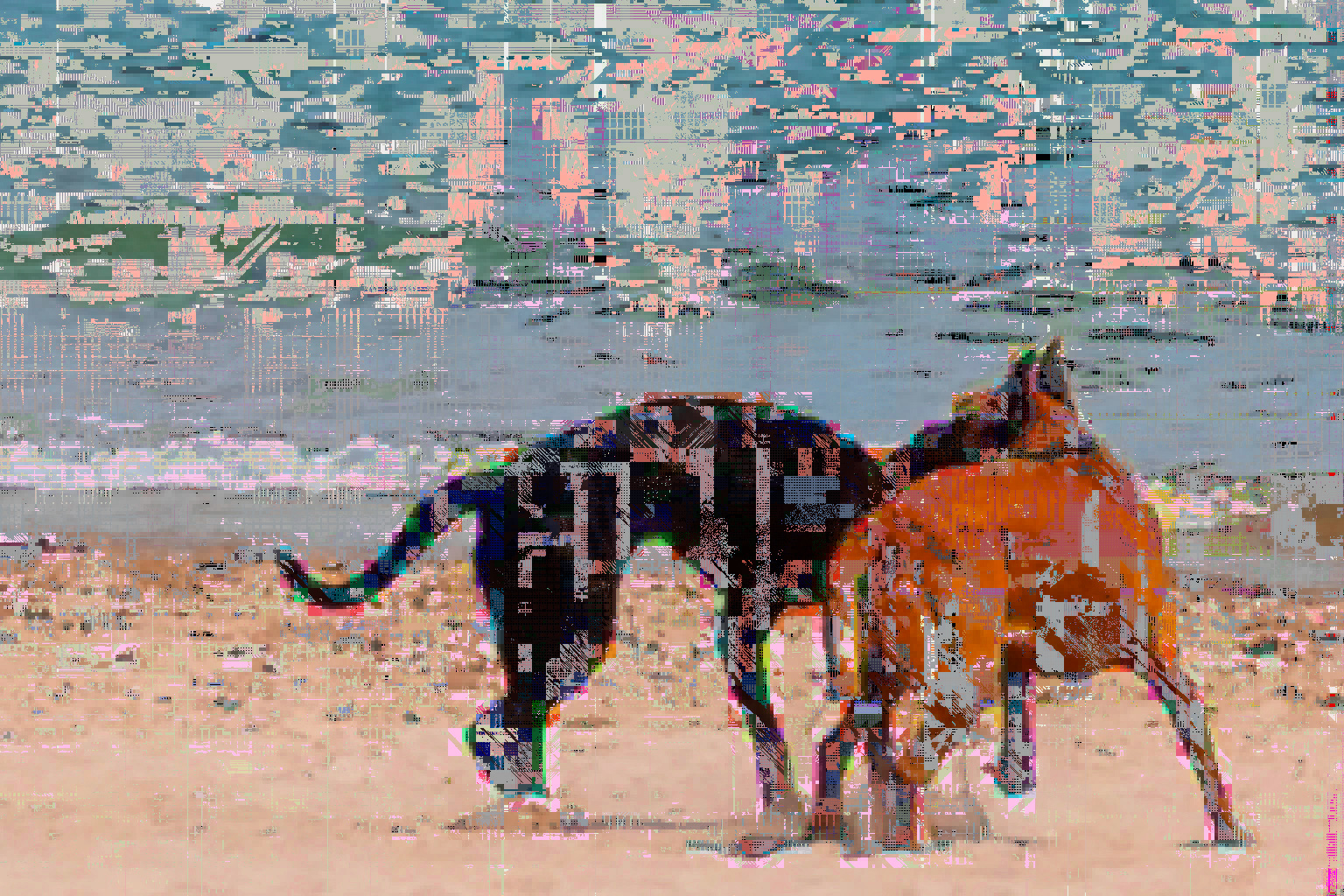
Dogs 001 (Foster Avenue Beach, Chicago), digital print, 2013 (from the series Glitch Nation)
The series Glitch Nation uses glitch as a metaphor for the processes by which we record, forget, mythologize, discard, recast, contradict and reconstruct our collective experiences in order to make some kind of sense of the world. Most of the images are involved with my own experiences coming of age in the United States. Others, such as the series of drone, airplane and scanner images, involve immediate and conflicted social memory as it is being formed. Glitch evokes the loss inherent in all attempts to connect to the past, a loss inherent in time itself, a loss that we may consider natural, like the failing of the light as objects recede, but one that we also perpetrate out of our inability fully to confront both the horrific and the banal.
Paul Hertz is an independent artist and curator who teaches new media art history and studio courses at the School of the Art Institute of Chicago. He has worked with computers for nearly thirty years. His curatorial work includes "Imaging by Numbers" at the Mary and Leigh Block Museum, Northwestern University, 2008; "Second Nature," UIMA, 1999, and "La Finca: The Homestead," Universidad Politécnica de Valencia, Spain, 1996. Hertz developed software for the Collaboratory Project at Northwestern University, where he also taught new media and virtual reality courses and served as co-chair of the Center for Art and Technology. His free software "GlitchSort" has been widely used in the glitch art community. In his work, he delights in dysfunctional fortunetelling, faux symbolism, intermedia, code sourcery, glitching and social interfaces.
URL: http://ignot.us/
